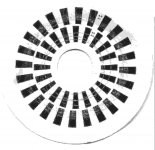polishedball
Experienced Member
- Joined
- Mar 21, 2010
- Messages
- 114
Trying to bring an 8050 online, it shows no errors and has a green light until I try to format then it goes red.
If I give it a HEADER"test",D0,IXX or D1, to try a format the heads move to the farthest outside track and it returns a bad disk error. If it starts on the outside track it bangs the heads like a 1541 then returns a bad disk error.
Any guides for these anywhere, other than the built in diagnostic error codes?
Thanks for all the help especially since I have just jumped in as a new person not contributing much yet.
If I give it a HEADER"test",D0,IXX or D1, to try a format the heads move to the farthest outside track and it returns a bad disk error. If it starts on the outside track it bangs the heads like a 1541 then returns a bad disk error.
Any guides for these anywhere, other than the built in diagnostic error codes?
Thanks for all the help especially since I have just jumped in as a new person not contributing much yet.

